Seamlessly present your world-class events online with Zoom Meetings and Zoom Webinar.
When hosting large meetings, it's important for the host to know what features they can access and how to enable/disable them. Zoom Meetings is an activity for a group of people to easily interact with each other for the sake of mutual exchange of ideas and cooperation, and it allows all participants to easily communicate and share with each other or the host.
Zoom Webinars are the best method for presenting to a large audience where the host has more control and attendees can join with optional audio or video turned on. The focus of the webinars is on the presenter or the panelists. Participants join to listen, learn, and ask questions at the end. Zoom Webinar supports large internal and external events, such as city council meetings, product announcements, customer conferences, concerts, and even religious gatherings.
What is Zoom Meeting?
Zoom Meetings is designed to be highly collaborative, allowing all attendees to share content and turn their videos on or off, annotate, use a whiteboard, and contribute to the conversation. Due to the collaborative nature of virtual meetings, they are the best among events where you can track whether all attendees are attending.
What are Zoom Meetings Key Features?
Waiting Rooms – In addition to requiring a password, you can enable “waiting rooms” to allow the host to scan attendees and ensure that only those invited to the event can join.
Registration – For licensed Zoom Meetings users, you have the option to schedule your meetings and register for attendees. You can customize the fields you want and your registration page.
Screen sharing – The owner of the meeting can share the content and allow attendees to share their screen as well. While sharing your screen, you can also share music and video sounds.
Online Whiteboard – When sharing your screen, you have the option to share the whiteboard. This allows you to share a blank white screen where you can annotate. You can draw, write and put stickers on it, just like a classroom whiteboard. The host can allow attendees to add a joint comment.
Breakout Rooms – Breakout Rooms feature allows you to split your meeting into 100 separate sessions by creating individual spaces for collaboration and small group meetings.
Reactions – Meeting participants can react with emoji during a meeting to communicate without interrupting the meeting. The emoji appears in the corner of the participant's video.
Chat – In-meeting chat supports 1-to-1 private chat as well as group chat. The host can choose who attendees can chat with, or disable chat altogether.
Poll – For licensed Zoom Meetings users, you can set up and start up to 25 polls in a single meeting. You can do single or multiple choice polls to interact with your meeting attendees.
Live Broadcasting – Licensed Zoom Meetings users have the opportunity to broadcast from YouTube Live, Facebook Live, etc. to expand their audience reach.
Appearance management – The host or assistant can feature up to nine video participants as the primary active speaker, and attendees only see those speakers. This feature is often used to highlight a keynote speaker. The host or assistant can also rearrange the order of the gallery view for attendees.
What is Zoom Webinar?
As an add-on to your paid Zoom Meeting license, Zoom Webinar allows you to connect with audiences around the world. Using Zoom Webinar ensures a smooth experience as it provides the same excellent video quality and reliability of Zoom.
Here are the key features you might be interested in while using Zoom Webinar:
Registration – You can request registration when scheduling your webinar. Like meetings, you can customize your registration page to capture the spaces you want.
Brand – You can customize your webinar registration page with color scheme, title, banner, logo and speaker information.
Resource tracking URLs – In Zoom's webinar , if you share the webinar registration page in multiple places, you can create links that allow you to see where your signups are coming from. For example, you can share a resource tracking link on Facebook or Twitter to see which performs best.
Q&A – The Q&A feature allows attendees to submit questions during the webinar. The host, assistants, and panelists can answer submitted questions. Additionally, if the host enables it, attendees can answer questions from other attendees and vote. After your webinar, you can download the Q&A report and review the submitted questions. For example, to provide a more effective webinar attendance tracking experience, you can review what questions and topics an attendee has asked.
PayPal and EventBrite integrations – PayPal integration allows you to charge a registration fee for your webinars. EventBrite integration allows you to sell tickets and manage your webinar (and meeting) recordings and automatically synchronize attendee information.
Post-webinar poll – When scheduling your webinar, you can create a post-event poll. You can create the survey yourself or have your respondents referred to a third-party survey solution. This feature provides information about how your activity went, how your content was received, etc. can be used to get feedback on
Attendee view management – In webinars, you have three screens to show panelists, active speaker and presentation at the same time. A host can highlight video from multiple users, allowing attendees on the desktop to see it. The webinar host and panelists can also rearrange the order of the Gallery View .
Live Broadcasting – With Zoom Webinar, you also have the opportunity to reach an even wider audience by broadcasting from YouTube Live, Facebook Live or any other platform.


